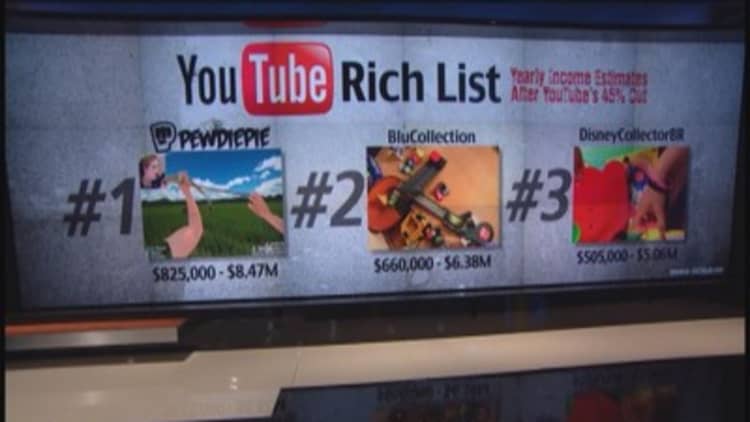Eight years ago Google paid $1.65 billion for what was even then the biggest video-sharing service in history. But it was still considered a risky bet, as nearly all the videos were homemade or violated copyright protection—exactly what advertisers, starting to move dollars online, wanted to avoid.
But Google not only overcame the piracy issue (a $1 billion lawsuit by Viacom was settled this year), it's brought advertisers on board. The site is now a cash cow, generating an estimated $7.2 billion in gross ad revenue this year—according to eMarketer—up from $5.6 billion last year.

Since the era of fuzzy sleeping cat videos, YouTube's creator base has grown up and gone pro. There are over 8,000 YouTube stars with over a half million subscribers—they're among the million creators that share ad revenue with YouTube. (YouTube creators also have the option of selling subscriptions, but nearly all opt for an ad-supported model).
YouTube has also created a vibrant ecosystem of content networks that foster, promote, and cash in on YouTube creators—Maker Studios was bought by Disney for $500 million, and Dreamworks Animation is paying as much as $117 million for teen-oriented Awesomeness TV. And it's not just content companies that are profiting from YouTube's platform: Ad tech company Zefr, which supports brands and content owners on the platform, has raised over $60 million.
The anniversary of Google's purchase of YouTube comes just the day after YouTube made its biggest-yet move into a new business model, a subscription business.
Next week it's starting to roll out "YouTube Music Key," which will cost $9.99 a month for ad-free music and videos, with the ability to listen offline as well as online. It's starting as an invite-only beta service, which will be free for the first six months, followed by a promotional lifetime price of $7.99. Subscribers to the new YouTube service will get free access to Google Play Music, which also costs $9.99, for access to 30 million songs. It's a bold move by CEO Susan Wojcicki, who took the helm in February, to test a totally new model, and to see if consumers will be willing to pay a company from which they're used to getting everything for free.
YouTube is also facing growing competition for its top creators, as other platforms, like Vimeo, owned by IAC, try to lure them away with more "premium" platforms, and video-on-demand systems. Some of the content networks, like Maker Studios, are building their own platforms, like Maker.TV. To keep creators loyal to YouTube, Wojcicki has been investing in the production studios and tools it offers for free at YouTube "Spaces" in Los Angeles, London, Tokyo and New York.
YouTube's success over the next eight years hinges on innovating not just with ad formats, but also its relationship with content creators. In light of reports that YouTube's most-followed creator PewDiePie is considering leaving, Wojcicki has said the company talks to all its creators—implying she's willing to give a more favorable revenue split to the biggest names.


